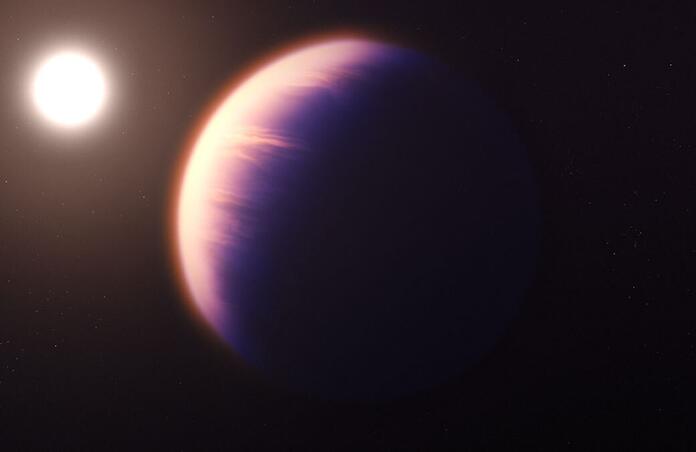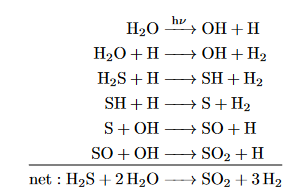Identification of Photochemical Processes Occurring within Exoplanet Atmosphere

The James Webb space telescope (JWST) continues to provide astounding insights into the nature of exoplanets as it completes part of the Transiting Exoplanet Early Release Science Program with the goal of compiling the full atmospheric composition of certain planets. Wasp-39b, also known as Bocaprins, was chosen as an observation target. During a transit of the planet across its home star, the JWST was able to capture the most detailed data on an exoplanet’s atmosphere to date. By using the exoplanet’s atmosphere as a type of filter, which varies with composition, a specific spectrum of light was captured, and matched with the known spectra of certain compounds. Full spectroscopic plots have allowed for precise estimations of atmospheric composition, and therefore, the modelling of various processes.
This exoplanet in particular has been noted previously within the news cycle, as it was the first planet to definitively contain carbon dioxide within its atmosphere. Now the JWST has managed to show that its atmosphere also contains traces of sulphur dioxide (SO2), a compound bearing its own interesting implications. This discovery is outlined in a paper led by Shang-Min Tsai, and is one of a series of 5 papers that detail the various findings made by these observations of Wasp-39b.
Wasp-39b is classified as a hot Saturn, being of approximate size, yet orbiting significantly closer to its home star, Wasp-39, at an orbital radius of 0.0486±0.0005 AU and a period of 4 days. The gas giant has a surface temperature of ~1100 K. The study notes that the spectrum derived from this series of observations has a noticeable, gap within the waveform, located between 4.0 to 4.2 μm, and peaking at 4.05 μm. This gap could not be described by the equilibrium conditions within the atmosphere of Wasp-39b.
A candidate for this gap was the abundance of SO2. However, current physical and chemical models would not explain why it occurred naturally so high in the atmosphere. The team identified that to achieve the observed concentrations, a specific, photochemical reaction must be occurring. At thermodynamic and chemical equilibrium within the atmosphere of Wasp-39b, the expected pathway sources sulphur from hydrogen sulphide (H2S). The key here is that incoming photons from the host star suffice to break apart the water found in its atmosphere, known as photolysis, into free hydrogen (H) and hydroxyl (OH) radicals. These then react with the H2S along a specific pathway. A sulphur radical is freed during reactions with the H, allowing it to be oxidised by the OH twice, yielding the identified sulphur dioxide.

Description of the chemical pathway taken by compounds, leading to the double oxidation of free sulphur radicals, and the presence of sulphur dioxide in the absence of its equilibrium conditions.
This represents the first ever concrete identification of a photochemical process within an exoplanet’s atmosphere.
Including this, the JWST also provided higher resolution data on other compounds, primarily CO2 and H2O, confirming their previous discoveries and providing more accurate measurements as to their abundance. Curiously however, it was unable to trace any actual H2S, suggesting that due to these photochemical processes, it exists within an untraceable abundance.
These discoveries provide even more insight into the nature and formation of giant exoplanets. Their study highlights the impact photochemistry has on hotter planets, necessitating future investigations to account for the possibility. Particularly, the study states that the specific sulphur pathway would be expected to occur within planets with high metallicity and temperatures in excess of 750K.
--
Journal Source: Shang-Min Tsai et al, Direct Evidence of Photochemistry in an Exoplanet Atmosphere, submitted 18th Nov 2022, under review
Cover Image: Credit: NASA, ESA, CSA, Joseph Olmsted (STScI)
